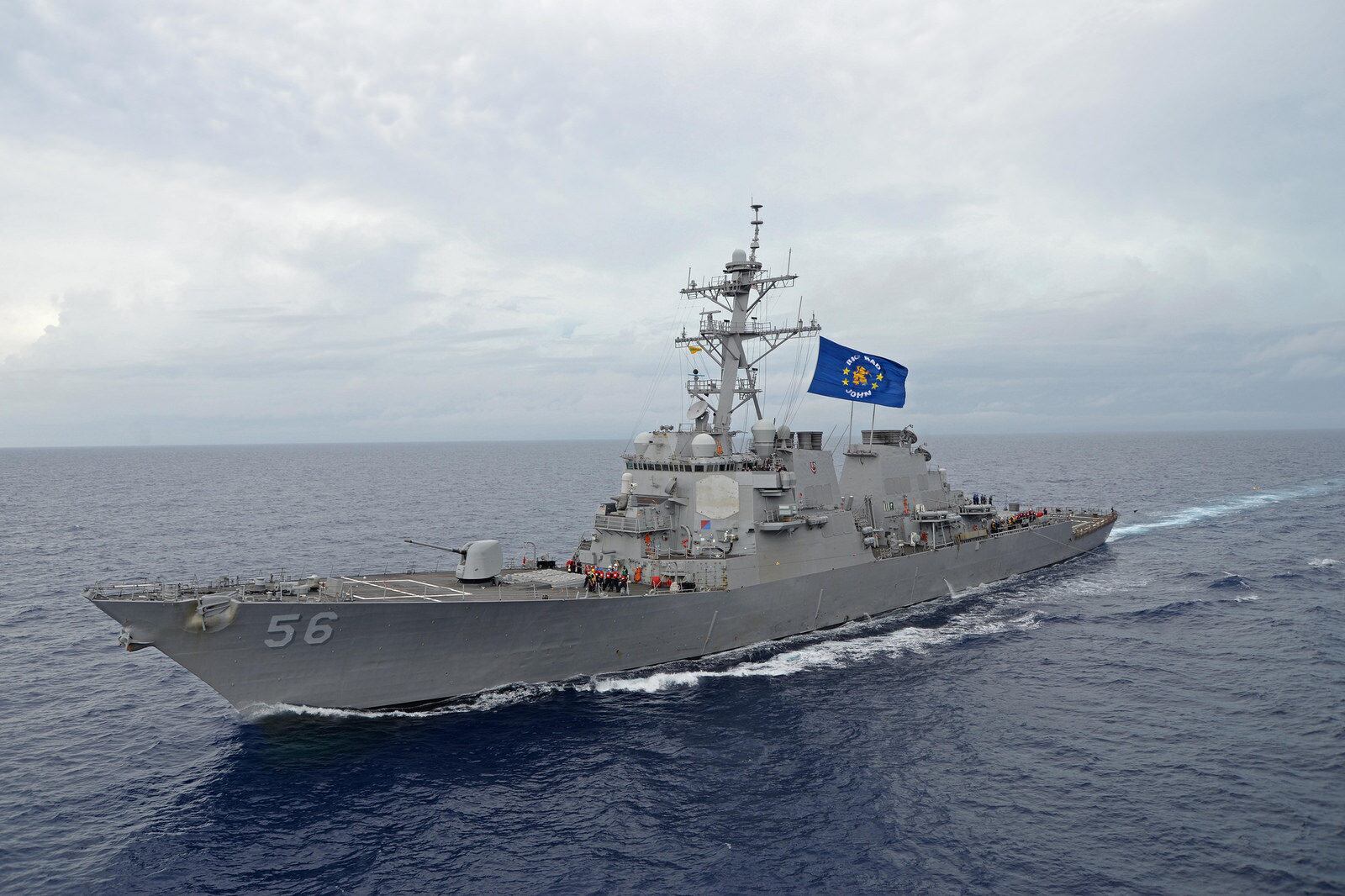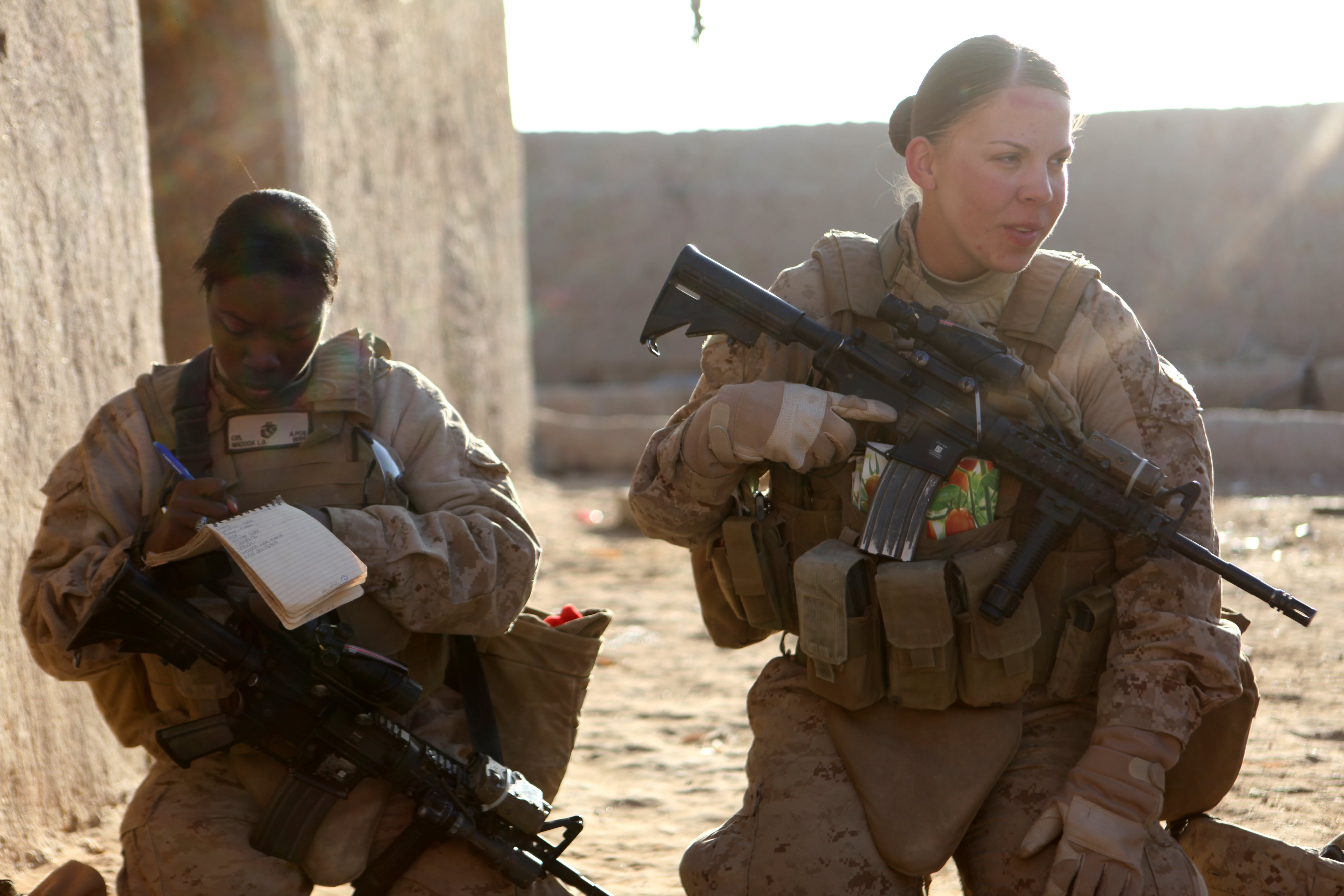The Navy’s top officer is eyeing U.S. 7th Fleet based in Yokosuka, Japan, after four accidents in one year have resulted in three collisions, a grounding, seven sailors dead and 10 missing as of Monday afternoon.
The fleet, which is led by Vice Adm. Joseph Aucoin, is now under direct scrutiny after Chief of Naval Operations Adm. John Richardson directed his four-star fleet boss, Adm. Phil Davidson, to determine if 7th Fleet ships are ready to do the basics of their jobs.
"[The collision is] the last in a series of incidents in the Pacific Fleet in particular, and that gives great cause for concern that there is something out there that we’re not getting at," Richardson told a group of reporters Monday afternoon. "So I’ve conferred with senior leadership in the Navy and in the department. We are taking a much more aggressive stance at this point to get to that level of understanding."
Richardson, who ordered a vague ”operational pause” earlier in the day, said he was directing Fleet Forces Command head Davidson to look at training of sailors in 7th Fleet while they are forward deployed.
“There’s the longer-term review that I’ve asked Adm. Davidson, down in fleet forces command, to undertake,” Richardson said.
“This will be a broader effort, looking at a number of things. One being, what is the situation out in Japan with our forward deployed naval forces out there, how are they executing their business? I just want to understand that more deeply in terms of training, generating that readiness that we’ve asked them to achieve, and then certifying that readiness.”
The scrutiny comes on the heels of the second major at-sea disaster since June, which has crippled two of the Navy’s ballistic missile defense ships at a time when the threat from the Nuclear-armed Kim regime in North Korea is rapidly increasing.
John S. McCain collided with the Liberian-flagged merchant vessel Alnic MC just east of the Singapore Strait entering the Strait of Malacca at 5:24 a.m. local time. The Alnic, which is three times the size of McCain, is an oil and chemical tanker.
The search for the 10 missing sailors is ongoing, as of Tuesday morning local time, Monday evening on the East Coast.
The scrutiny is likely to put pressure on Aucoin, the 7th Fleet Commander, after a run of accidents among his ships that has little precedent in recent Navy history.
When asked if Pacific Fleet Commander Adm. Scott Swift still had confidence in Aucoin to lead 7th Fleet, a spokesman said that was not the commander’s immediate focus.“Right now the Navy’s focus remains on the active search and rescue for the ten missing Sailors and ensuring the safety and care of the ship, the crew and families.”
Aucoin is slated to turn over 7th Fleet in September with Rear Adm. Philip Sawyer, who will likely be the one in the hot seat to implement the changes mandated in the ongoing review.
Richardson said his review will encompass navigation and safety practices, as well as a larger look at the state of the surface force. The review should be done quickly, but did not put a firm time-frame on it.
Operational pause
In the immediate aftermath of the accident, Richardson announced a Navy-wide ”operational pause,” but it was unclear what that meant.
The pause, which Richardson said would last one-to-two days, would be a chance to review the basics.
“You devote some time, at the command level, where you sit down with those teams, and those teams will be dynamic depending on what sort of command you’re talking about, and you do an assessment and review of those fundamental practices that are, fundamental I guess, to safe and effective operations,” he said at the press conference.
What the pause looks like would be largely up to the commanders in the fleet but he would give some guidance, he said.
“I’m not going to determine how they should get a this,” Richardson said. ”I’m going to provide some guidance on things we do want to address but leave it to [commanders] to determine specifics.”
RELATED

Jerry Hendrix, a retired Navy captain, said an ”operational pause” is like a safety stand-down, which can be ordered after everything from a rash of DUIs at a command or to address larger fleet-wide issues.
“Basically its decision to take the individual commands in the region and give them a period of time to focus on safety,” Hendrix said “But it‘s not as if you can pull every ship back into port, so I’m not sure how they are going to accomplish this.”
David B. Larter was the naval warfare reporter for Defense News.




